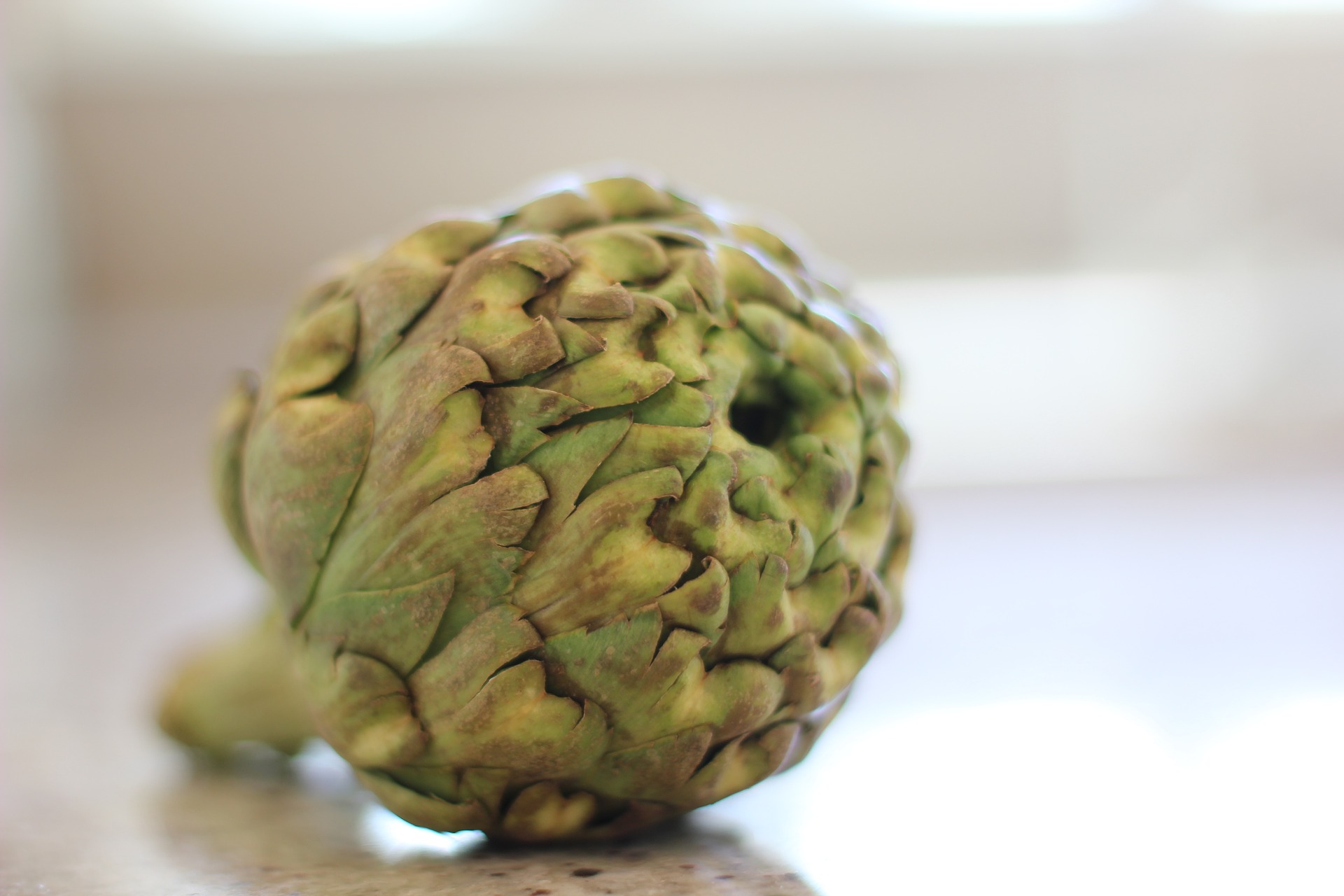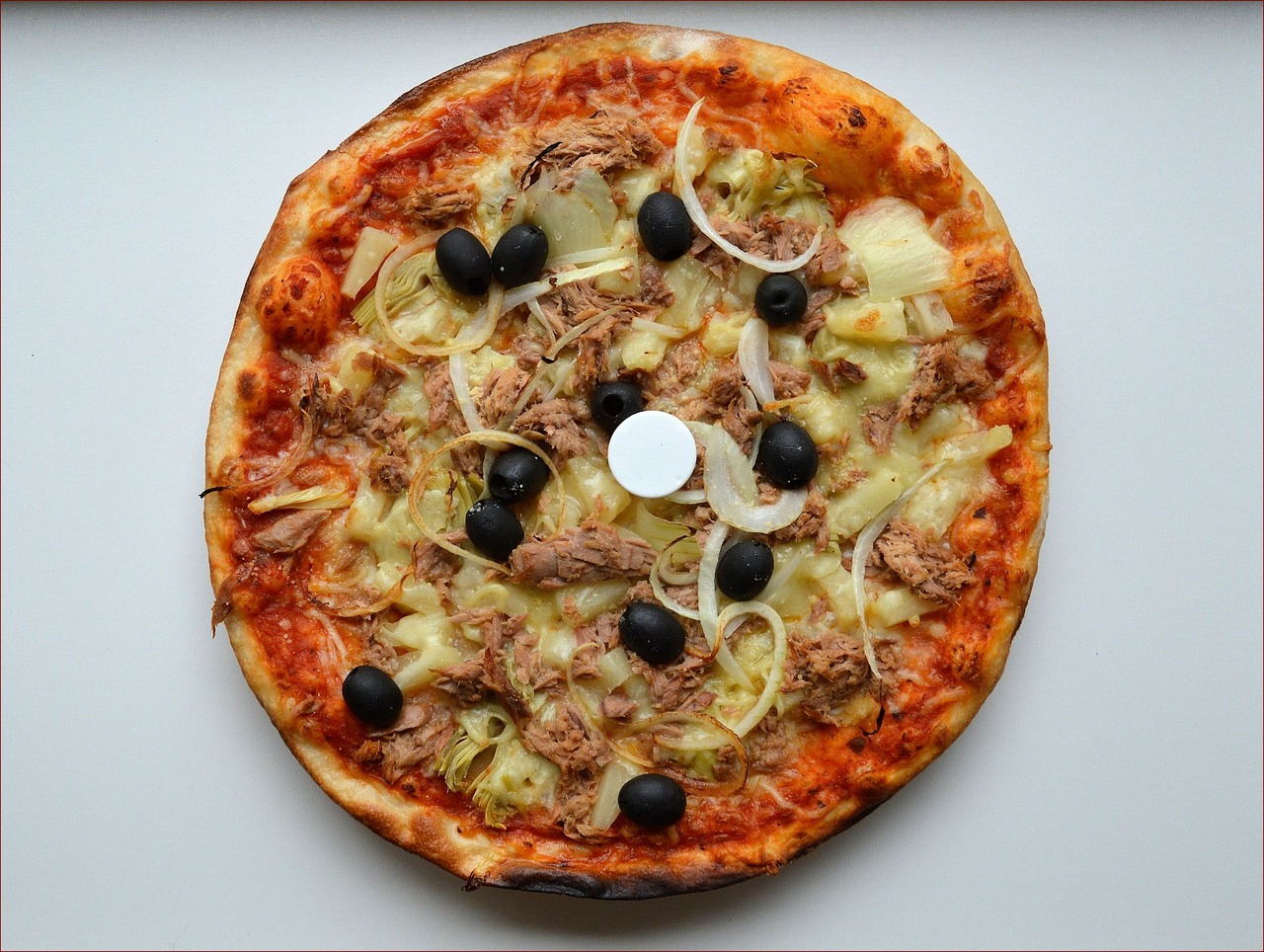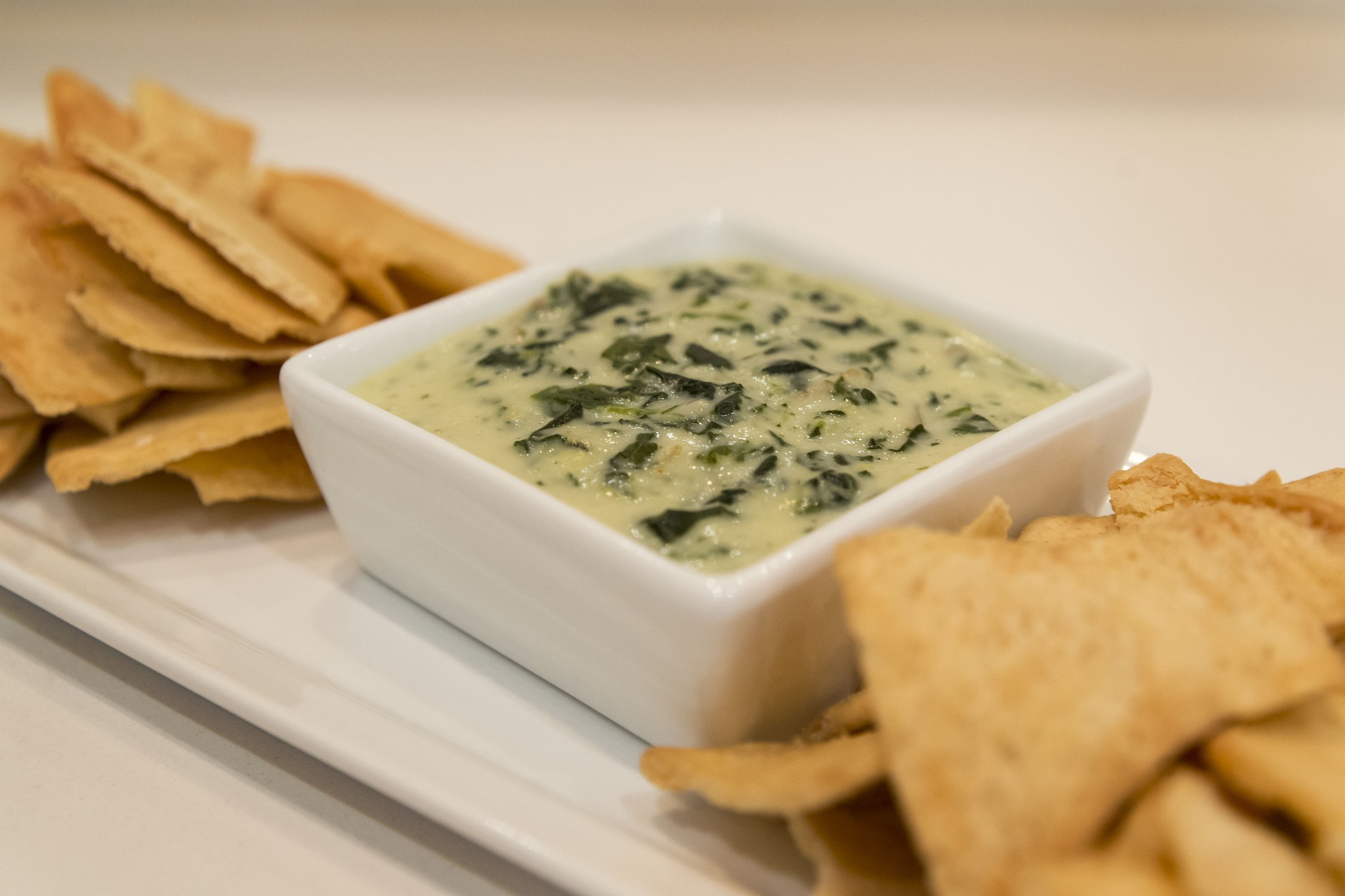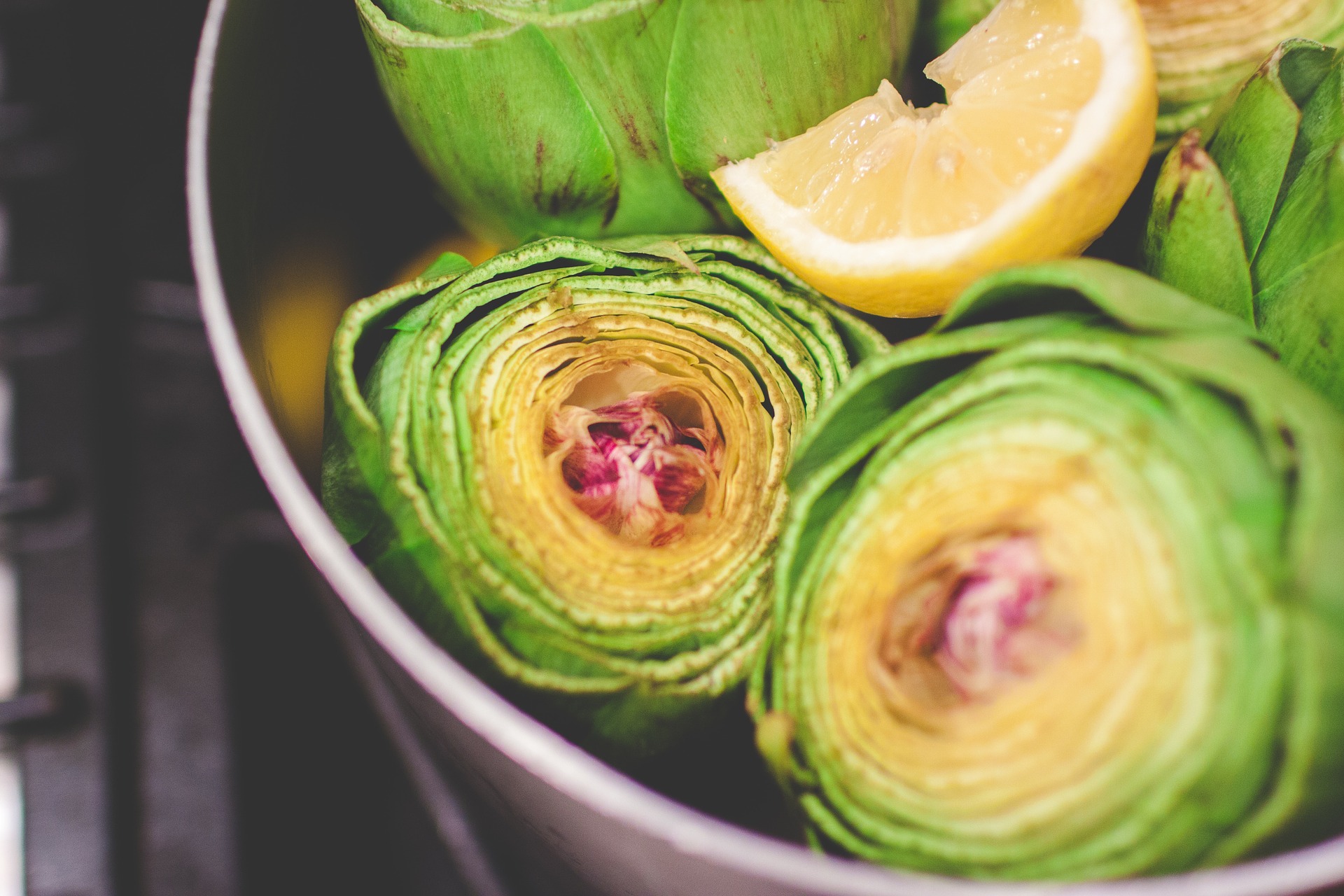by Sharon Quercioli
Artichokes aren’t just fun to say… They’re fun to eat! Better yet, they’re full of vitamins and nutrients. Let’s go over some of the artichoke basics before I let you in on two of my favorite artichoke recipes.
 What are they?
What are they?
Artichokes are known mostly because of their unique shape. Since they come from thistles, it makes sense that they look like them. They grow in Middle Eastern countries, Europe and in America. (They aren’t frequently found in Asian countries.) When you see them or grow them, you’ll find that you are actually eating a bud that is within a flowerhead. Just make sure that you cultivate it before the flower fully blooms or the artichoke will become hard and be pretty much inedible.
So what’s so great about these thistles? (Yes, technically they aren’t vegetables.)
 Fiber and Protein!
Fiber and Protein!
One medium-sized artichoke has more than five grams of fiber! That’s nearly a quarter of your RDA (recommended daily amount). This is even more than a cup of prunes, which says a lot! But even though it has a ton of fiber, it only has only 60 calories (per medium sized artichoke)! All that fiber is great if you want to fill your belly up and feel full without eating too many calories or stuffing yourself full of junk food.
They are also a great veggie if you need more protein in your diet. One medium-sized artichoke has about four grams of protein. Not too bad from a veggie! (That’s right…not really veggie.) This is amazing considering that we get most of our protein from animals and animal by-products.
Antioxidants and other Vitamins
The US Department of Agriculture (USDA) has verified that artichokes have sizeable amounts of antioxidants, including:
- Rutin
- Gallic Acid
- Cynarin and Luteolin
- Quercetin
- Chlorogenic Acid and Caffeic Acid
- And Anthocyanins
These are just to name some….there’s more. Even better, artichokes are also full of potassium, folic acid, vitamin C and magnesium.
Artichokes Touch on Everything!
Since they’re full of magnesium, phosphorus and manganese, they can help your bone health, especially with bone density. The magnesium and manganese also boost your metabolism. In addition, the folic acid helps prevent birth defects if you’re pregnant! The vitamins also help to reduce the bad cholesterol in your system and to increase the level of good cholesterol as well. You can thank the omega-3 fatty acids in artichokes for that.
Healthy and Skinny Artichoke Dip with Red Peppers
 What You’re Going to Need:
What You’re Going to Need:
- Two (14-ounce) cans artichoke hearts, drained and chopped
- Eight ounces of light vegetable cream cheese, softened and at room temperature
- Five ounces plain nonfat Greek yogurt
- A half of a cup diced roasted red peppers
- A fourth of a cup plus a tablespoon shredded Parmesan cheese
- Three tablespoons chopped fresh parsley
- Three tablespoons chopped green onions
What You Need to Do with Those Things:
- Preheat the oven to 350 degrees.
- In a large bowl, combine the artichoke hearts, cream cheese, yogurt, roasted peppers, a fourth of a cup of the Parmesan cheese, parsley and green onions. Mix well. Move everything into a baking dish (preferably shallow), and top with the rest of Parmesan cheese.
- Bake for about twenty minutes to a half an hour. It’ll be hot and bubbly, so don’t be scared. Serve with an assortment of vegetables for dipping.
Roasted Artichokes
 One of the best and purest ways to eat artichokes is to roast them. You get to keep the flavor of the artichokes without cutting it with creamy sauce or pairing it with spinach. (This tastes great but can get boring after a while.) Mix up your artichoke intake by simply roasting them in the oven with a blend of your favorite herbs and spices.
One of the best and purest ways to eat artichokes is to roast them. You get to keep the flavor of the artichokes without cutting it with creamy sauce or pairing it with spinach. (This tastes great but can get boring after a while.) Mix up your artichoke intake by simply roasting them in the oven with a blend of your favorite herbs and spices.
What You’re Going to Need:
- Three fresh artichokes
- Two lemons (sliced into wedges)
- Garlic (6 chopped cloves)
- Your favorite herbs (though I suggest thyme, sage, oregano and/or rosemary)
- Olive oil or melted butter (and a brush)
- Salt and Pepper
What You Need to Do with Those Things:
- Preheat your oven to 400 degrees.
- Trim and prep the fresh artichokes by cutting off the bottom of the stem and about an inch off the top of the artichoke.
- Pick off and throw out any of the lower leaves near the stem.
- Trim off the tops of the artichoke leaves (if they’re super pokey).
- Slice the artichokes in half.
- Use a spoon to cut out or hollow the “choke” (which is the middle of each half).
- Rub the artichoke half (on all sides) with a lemon wedge to help keep them from browning.
- Brush the artichokes with olive oil (or butter), then place them (cut-side-up) in a baking dish or on a baking sheet.
- Fill the artichoke cavities (where the choke was) with garlic and herbs. I recommend packing these as full as possible for maximum flavor. Then season with salt and pepper.
- Flip them over. Then brush again with olive oil, season once more with salt and pepper.
- Time to roast it! First, uncovered for about 10 minutes, so that the edges can get browned and crispy. Then, remove the pan and cover loosely with foil, and let the artichokes continue to cook until they are tender. You will know that they are ready to go when the leaves pull off easily and a knife can be smoothly stuck in the base of the stem. Keep a close eye on them. Check after 25 minutes, though they might need a little extra time depending upon your oven and artichokes.
- Drizzle with lemon juice (squeezed out of the leftover lemon wedges). Once you pull the artichokes out of the oven, discard the herbs. You can also stir them into your favorite dipping sauce for extra flavor. I suggest Pesto, aioli or a lemon butter sauce. Give the artichokes one more squeeze of lemon juice, for good measure.
- Eat up!
